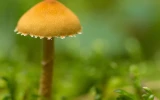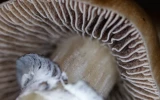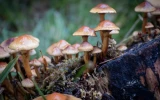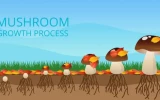Mycelium Growth Described (Day-by-Day with Pictures)
Mycelium, the vegetative part of fungi, is an incredible organism that plays a crucial role in the natural world. The growth of mycelium can be fascinating to observe as it spreads across surfaces and absorbs nutrients in its path. In this article, we will describe the growth of mycelium day-by-day with pictures, providing a unique insight into the development of this amazing organism.
Mycelium grows by extending its hyphae and secreting enzymes that break down complex organic matter, allowing the fungus to absorb nutrients. It forms a network of hyphae that can span vast distances and connect with other fungi and plant roots in a mutually beneficial relationship known as mycorrhizae.
Let's explore the various stages of mycelium growth and highlight the key features that make it such a remarkable and important player in our ecosystem. Whether you are a biologist, a gardener, or simply curious about the natural world, this article will give you an in-depth look at the fascinating world of mycelium.
Summary
- Mycelium growth is crucial for the survival of fungi and plays a crucial role in nutrient cycling and decomposition in ecosystems.
- From day 1 to day 4, the mycelium begins to germinate and extend hyphae into the substrate.
- From day 5 to day 9, the mycelium is becoming more robust.
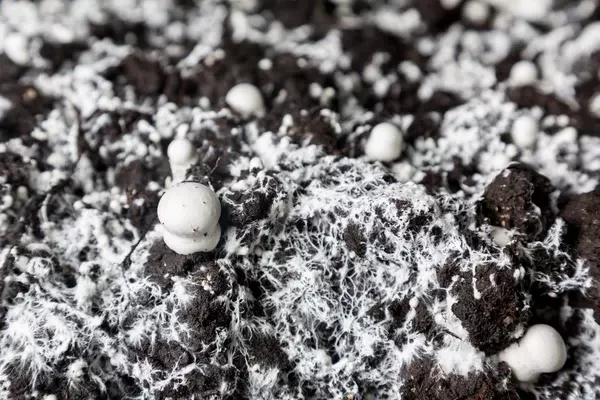
On this page:
Growth of Mycelium Day-by-Day
Here’s the day-to-day growth of mycelium from day 1 to day 9.
Day 1: The mycelium growth after inoculating the substrate with spores or mycelial fragments
On day 1 of mycelium growth, the substrate is typically inoculated with spores or a small piece of mycelium. The mycelium will begin to germinate and extend its hyphae into the surrounding substrate.
At this stage, the mycelium is not visible to the naked eye and may take a few days to become visible as it continues to grow and spread. The mycelium is breaking down complex organic matter in the substrate using enzymes, which allows it to absorb nutrients and grow.
During this early stage, it is crucial to maintain proper environmental conditions such as temperature, humidity, and ventilation, to ensure successful mycelium growth.
Day 2: The mycelium continues to grow and spread
On day 2 of mycelium growth, the mycelium will continue to grow and extend its hyphae further into the substrate. It may start to become visible as a network of white, thread-like filaments that are branching out and forming new hyphae.
The mycelium is breaking down the substrate and absorbing nutrients to support its growth. It is important to maintain optimal environmental conditions such as temperature, humidity, and air exchange to promote healthy mycelial growth.
At this stage, the mycelium is still fragile and may be susceptible to contamination, so it is crucial to maintain sterile conditions during handling. The mycelium will continue to grow rapidly over the next few days as it colonizes more of the substrate.
Day 3: The mycelium continues to branch out and form a network of interconnected hyphae
On day 3 of mycelium growth, the mycelium will continue to expand and develop. The network of hyphae will become more visible and will spread out further into the substrate.
At this stage, the mycelium is still growing rapidly, and it may be necessary to increase ventilation and provide more space for the mycelium to grow. The mycelium may appear denser and more substantial than on day 2, and it may also start to show signs of clumping together in patches.
It is important to continue monitoring the environmental conditions and maintaining a sterile environment to prevent contamination. As the mycelium grows, it will continue to break down the substrate and absorb nutrients to fuel its growth, preparing for the next stage of the fungal life cycle.
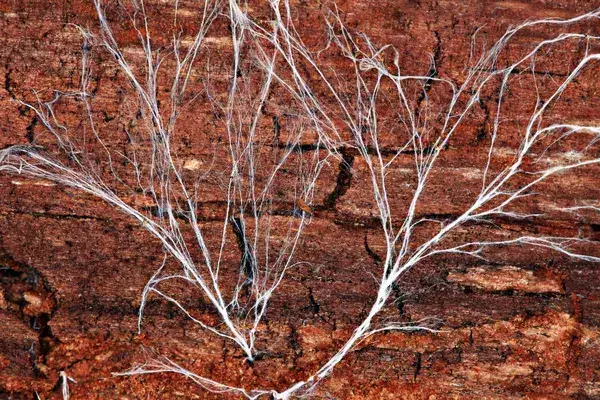
Day 4: The mycelium starts to colonize more of the substrate
On day 4 of mycelium growth, the mycelium will continue to colonize the substrate and expand its network of hyphae. The mycelium will be more visibly dense and may start to form visible patches or clusters. The hyphae will be breaking down the substrate and absorbing nutrients, causing the substrate to become more consolidated and compacted.
At this stage, it is essential to monitor the mycelium's growth and ensure that it has access to sufficient oxygen and moisture. The mycelium may also be more susceptible to contamination at this stage, so maintaining a sterile environment is still crucial.
As the mycelium continues to grow and develop, it will be preparing for the next phase of the fungal life cycle, which may involve fruiting body formation or further substrate colonization.
Day 5: The mycelium is forming visible patches and becoming denser
On day 5 of mycelium growth, the mycelium will be well-established, having colonized a significant portion of the substrate. The hyphae will be more densely packed, forming a thick, white mat. The mycelium may appear to be more visibly robust and may have taken on a more defined shape or pattern.
The mycelium will continue to break down the substrate, releasing nutrients that will support its growth and development. It is crucial to maintain optimal environmental conditions to promote healthy mycelium growth and prevent contamination.
At this stage, the mycelium may be preparing to enter a new phase of growth, such as the formation of fruiting bodies or further substrate colonization. The mycelium's growth rate may also start to slow down as it approaches the end of its substrate resources.
Day 6: The mycelium is now spreading rapidly
On day 6 of mycelium growth, the mycelium will be fully established, having colonized most, if not all, of the substrate. The hyphae will be densely packed, forming a thick, white mat that covers the substrate's surface. The mycelium may be more resistant to contamination at this stage and may have a more defined shape or pattern.
The mycelium will continue to break down the substrate, releasing nutrients that will support its growth and development. At this stage, the mycelium may be preparing to enter a new phase of growth, such as the formation of fruiting bodies or further substrate colonization.
It is essential to continue monitoring the environmental conditions and maintaining a sterile environment to prevent contamination. The mycelium's growth rate may start to slow down as it approaches the end of its substrate resources.
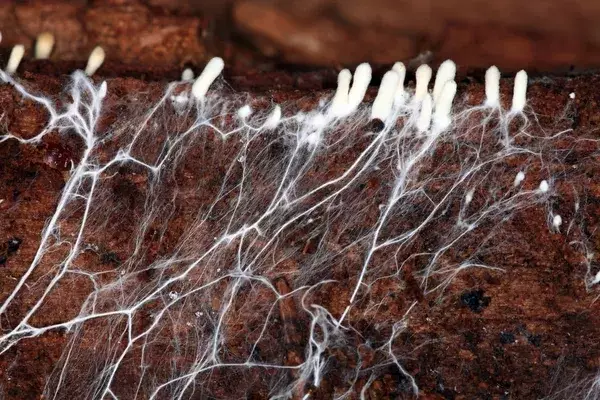
Day 7: The mycelium is now covering a significant portion of the substrate
On day 7 of mycelium growth, the mycelium will have fully colonized the substrate and formed a thick, white mat of hyphae. The mycelium will be more robust and resistant to contamination, and it may have a more defined shape or pattern.
At this stage, the mycelium may be preparing to enter the next phase of growth, such as the formation of fruiting bodies or further substrate colonization. The mycelium will continue to break down the substrate, releasing nutrients that will support its growth and development.
It is crucial to maintain optimal environmental conditions to promote healthy mycelium growth and prevent contamination. The mycelium's growth rate may have slowed down significantly as it approaches the end of its substrate resources, and it may start to show signs of aging, such as browning or drying out.
At this stage, it is essential to decide whether to continue cultivating the mycelium or harvest it for use in other applications.
Day 8: The mycelium is now fully established, having colonized most
On day 8 of mycelium growth, the mycelium may start to show signs of senescence, such as browning or drying out. The mycelium's growth rate will have slowed down significantly as it reaches the end of its substrate resources.
At this stage, it is crucial to decide whether to continue cultivating the mycelium or harvest it for use in other applications. If left unchecked, the mycelium may start to produce spores and enter a reproductive phase.
However, in most cases, the mycelium's growth will have peaked by day 7, and it may be time to move on to the next stage of cultivation or harvest the mycelium for use.
It is important to maintain optimal environmental conditions and sterile handling practices throughout the cultivation process to ensure healthy mycelial growth and prevent contamination.
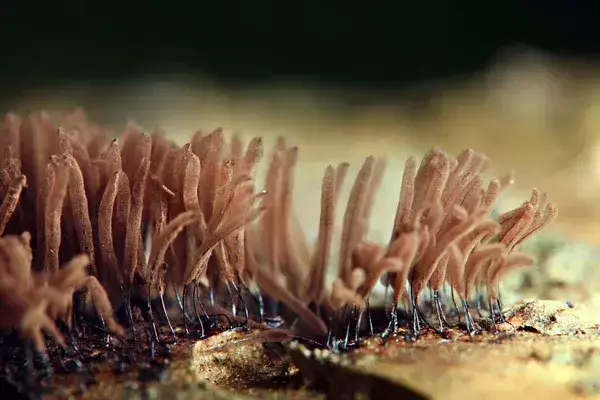
Day 9: The mycelium will continue to grow and mature, preparing for the next phase of the fungal life cycle
On day 9 of mycelium growth, the mycelium will continue to show signs of senescence and may begin to deteriorate. The mycelium's growth rate will have significantly slowed down, and it may start to dry out or turn brown.
At this stage, it is essential to either harvest the mycelium for use in other applications or move on to the next stage of cultivation. If left unchecked, the mycelium may start to produce spores and enter a reproductive phase, which may not be desirable for certain cultivation purposes.
It is crucial to maintain optimal environmental conditions and sterile handling practices throughout the cultivation process to ensure healthy mycelial growth and prevent contamination.
